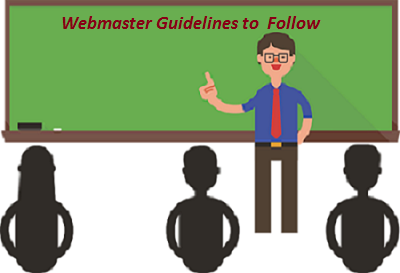
- Mar 14, 2017
What Changed in The Google Webmaster Guidelines?
Google Webmaster follows a long list of guidelines on how to optimize your website. Google rarely changed its rules over the years. Recently, the Webmaster witnessed some updates on its guidelines. It’s quite interesting to see what has been added as well as changed. This update is way different. It includes a complete set of new guidelines, numerous clarifications, combinations of former guidelines, and complete removal of certain guidelines. The update highlights secure sites (HTTPS), mobile SEO, and accessibility now being formally added in the Webmaster guidelines.
The very first line of the Google Webmaster guidelines says, “Following the General Guidelines below will help Google find, index, and rank your site.”
Definitely, when it comes to guidelines for ‘site search improvement’ no one can beat Google! Google did not alter anything important there, but they have defined what Google considers as spam and what can get you banned. Let’s take a look at the additions.
1. http to https
Google makes a significant addition by making it compulsory for websites to use HTTPS now.
As the new guidelines state: “If possible, secure your site’s connections with https. Encrypting interactions between the user and your website is a good practice for communication on the web”
What’s even more interesting is that Google began to mark the sites as unsafe in Chrome, which is not https.
2. Transition to Mobile-Friendliness
“Design your site for all device types and sizes, including desktops, tablets, and smartphones. Use the mobile-friendly testing tool to test how well your pages work on mobile devices, and get feedback on what needs to be fixed”
Google demands the websites to be crafted for every kind of existing device. A website has to be compatible with laptops, desktops, tablet PCs, or smartphones. A litmus test has also been proposed for checking the mobile-friendliness of a site. This would produce feedback based on which relevant things can be mended.
This addition shouldn’t really come as a surprise. Last year we have already had a mobile geddon. Mobile-friendliness is hereafter going to be a ranking indicator for mobile search.
3. Accessibility Returns
Accessibility made a strong comeback in the Google Webmaster guidelines. The new guideline leaves no doubt that accessibility is going to receive greater importance than earlier.
"Make your site's important content visible by default. Google is able to crawl HTML content hidden inside navigational elements such as tabs or expanding sections, however, we consider this content less accessible to users, and believe that you should make your most important information visible in the default page view."
This guideline clearly states that Google openly expects the initially visible content to be more significant and informative than the content found in tabs.
4. Mobile SEO
Mobile SEO is now officially in the guidelines of Google webmaster. As it goes- "Ensure that your pages are useful for readers with visual impairments, for example, by testing usability with a screen-reader."
Google requires sites to be very particular about the alt text used for images. Webmaster recommends putting up ‘specific, descriptive and accurate alt text’ only.
Following the new webmaster guidelines, there are also several updates to the existing guidelines. Let’s take a look at the updates.
1. Link and Site Hierarchy
Currently, Google recommends all web pages to be accessible from a link on the searchable page. This link can be anything ranging from text to an image with alt attribute, provided it is applicable to the target page. Contrary to the previous rule, now it reads: “Ensure that all pages on the site can be reached by a link from another findable page. The referring link should include either text or, for images, an alt attribute, that is relevant to the target page”
2. Human-Readable Sitemaps Required
Webmaster desires a human-readable sitemap relevant to the page hierarchy. A site must offer a human visible sitemap file that stores the links to vital parts of the webpage. If the sitemap contains a large number of links, then sites can break the site map into multiple web pages. There are many technical changes, most of which don’t need any concern if you already own a decently built website.
With these changes to the Webmaster guidelines, it seems Google is centering the focus on User Experience more than anything else.Technologies We Specialize In
We Are A Consulting Website Development Company As Well As Mobile Apps Development Company Operating Out Of Kolkata
7S WHY VTDesignz ?
- ISO 9001:2015 Certified & RAR+ Recommended 360° Digital Marketing & Outsourcing Company For Your End-To-End Marketing Needs.
- Our Team Of 400+ Members Can Deliver The Best & Industry-Standard Services To Help You Achieve Your Business Goals With Our Tailor-Made Solutions.
- We Have Best In Town Creative Members To Convert Visual Into Reality.
- Our High-Quality Control Process Ensures To Deliver Best Results To All Our Clients.
- We Offer Avant-Grade Facilities & Latest Technological Infrastructure For Better ROI.
- We Have Already Delivered 2500+ Projects Successfully Across The Globe.

